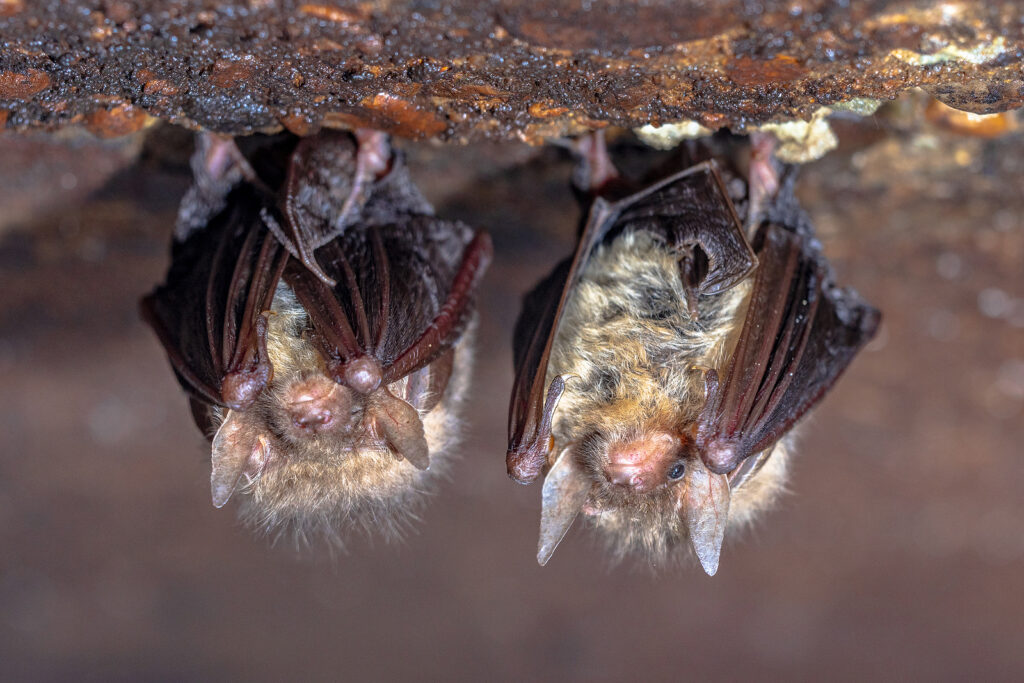Have you ever wondered how bats fly seamlessly through the darkest of caves or hunt swift insects at night with such precision? The answer lies in a jaw-dropping marvel of nature known as echolocation. Bats use this sophisticated sonar system to “see” in the dark, making them one of nature’s most fascinating species.
In this post, we’ll unravel the science behind bat echolocation, explore how it works, dispel common myths, and even provide insights into humanely managing nuisance bats around your property.

What Is Echolocation?
Echolocation is the remarkable ability to locate objects by reflecting sound waves off them. It’s like having a built-in sonar for navigation and hunting—similar to technology used in submarines, but far more advanced. Nearly 70% of all bat species rely on echolocation to function in their environments where eyesight falls short.
For nature enthusiasts and curious learners, echolocation in bats isn’t just a biological tool—it’s a symphony of evolutionary genius. What makes it even more intriguing is the wide range of ways bats use this skill, each fine-tuned for their unique hunting needs, habitats, and diet.
How Bat Echolocation Works
Echolocation works through sound production and echo detection. Bats emit high-frequency sound waves—known as ultrasonic calls—from their larynx, or in some species, through their noses. These sound waves bounce off objects like insects, trees, or cave walls and return as echoes.
By analyzing these echoes, bats can determine the size, shape, location, and even texture of objects, all within milliseconds. This ability helps them identify a flying moth in total darkness or locate a tiny crevice to roost during daylight hours.
Interestingly, the sound frequencies used by bats typically range from 20 kHz to 200 kHz—far beyond the human hearing range, which tops out around 20 kHz. Think of it as having a radar system nature built entirely from acoustics.
Adaptations for Echolocation
The wonder of echolocation lies not just in sound waves but also in bat anatomy. Certain physical traits enable this extraordinary ability, especially among species classified as Microchiroptera (echolocating bats).
Specialized Larynx and Vocal Cords
Microchiropteran bats have uniquely designed larynxes that produce ultrasonic frequencies. Their vocal cords are highly elastic to generate a wide range of sonar clicks at rapid intervals.
Enlarged Ears and Nose Leaves
Enlarged ears are crucial for capturing returning echoes. Some bats also feature nose leaves—specialized nose structures that help focus outgoing sound waves, providing greater control and precision.
Doppler Shift Compensation
Many species fine-tune their echolocation by compensating for the Doppler effect—a phenomenon where sound waves change frequency as bats and their prey move closer or farther apart. This compensation ensures accuracy even during high-speed pursuits.
Different Types of Echolocation
Not all bats echo-locate in the same way, making their diversity all the more stunning. Scientists have discovered at least three distinct echolocation styles among bats:
- Constant Frequency (CF) Calls – These high-pitched, continuous sound waves are particularly effective for detecting motionless or camouflaged insects, commonly used by bats in dense vegetation.
- Frequency Modulated (FM) Calls – With short sweeping bursts of sound that decrease in frequency, this precise form of echolocation helps bats in cluttered environments distinguish between multiple objects.
- Harmonic Calls – Some bat species use calls with multiple harmonics, allowing them to pinpoint targets even when background noise levels are high.
The Importance of Echolocation in the Ecosystem
Bats, aided by echolocation, play a critical role in maintaining ecological balance. Here are just a few ways that they contribute to the environment:
- Pest Control: Bats can eat their body weight in insects each night, controlling agricultural pests like moths, beetles, and mosquitoes. Without them, crops could suffer significant damage.
- Pollination: Species of Megachiroptera (fruit bats) aid in pollinating plants, especially tropical fruits like mangoes, bananas, and guavas.
- Seed Dispersal: After consuming fruits, bats help disperse seeds across vast areas, promoting forest regeneration.
More than just fascinating sonar systems, bats are silent guardians of our ecosystem!
Misconceptions About Echolocation
Despite their ecological importance, bats are often misunderstood. Let’s debunk some common myths:
Myth 1: Bats are blind.
False! While their eyesight varies depending on the species, most bats can see quite well. Their echolocation complements, rather than replaces, their vision.
Myth 2: All bats use echolocation.
Not true! Fruit bats in the tropics primarily rely on their excellent eyesight and sense of smell instead of echolocation.
Myth 3: Echolocation only works at night.
Nope! Echolocation works any time of day but is most useful in low-light conditions.
The Dilemma With Nuisance Bats
When bats roost in your attic or property, it can create health and safety concerns, such as the spread of diseases like histoplasmosis or damage to infrastructure. But that doesn’t mean bats should be eradicated—they’re vital to our environment.
If you’re dealing with nuisance bats, here are some humane and safe tips for removal and control:
- Seal Entry Points: Inspect and seal any cracks or openings after ensuring bats have left.
- Install Bat Houses: Provide alternative roosting areas like bat boxes nearby to encourage relocation.
- Contact Professionals: Reach out to wildlife control services, who specialize in the safe and legal removal of bats. Harsh methods not only harm bats and their ecosystem but may also be prohibited by law in some areas.
By addressing nuisance bats responsibly, you can protect your property while preserving one of nature’s most beneficial species.
Final Thoughts
Echolocation in bats is an extraordinary adaptation that underscores the wonders of evolution. From their intricate anatomy to their crucial role in pest control and pollination, bats continue to fascinate scientists and animal lovers alike. By understanding and appreciating these sonar specialists, we can do our part in conserving their populations and minimizing human-wildlife conflicts.
Are you struggling with nuisance bats in or around your property? Contact Smoky Wildlife Control at 615-610-0962 for bat removal and control in Nashville and Clarksville, Tennessee. We serve residential and commercial clients
Related Posts:
Bat-Proof Your Home: Tips from a Bat Removal Expert
Bats in the Belfry? More Like the Attic: A Closer Look at Bat Infestations
The Common Signs of Bats in the House



